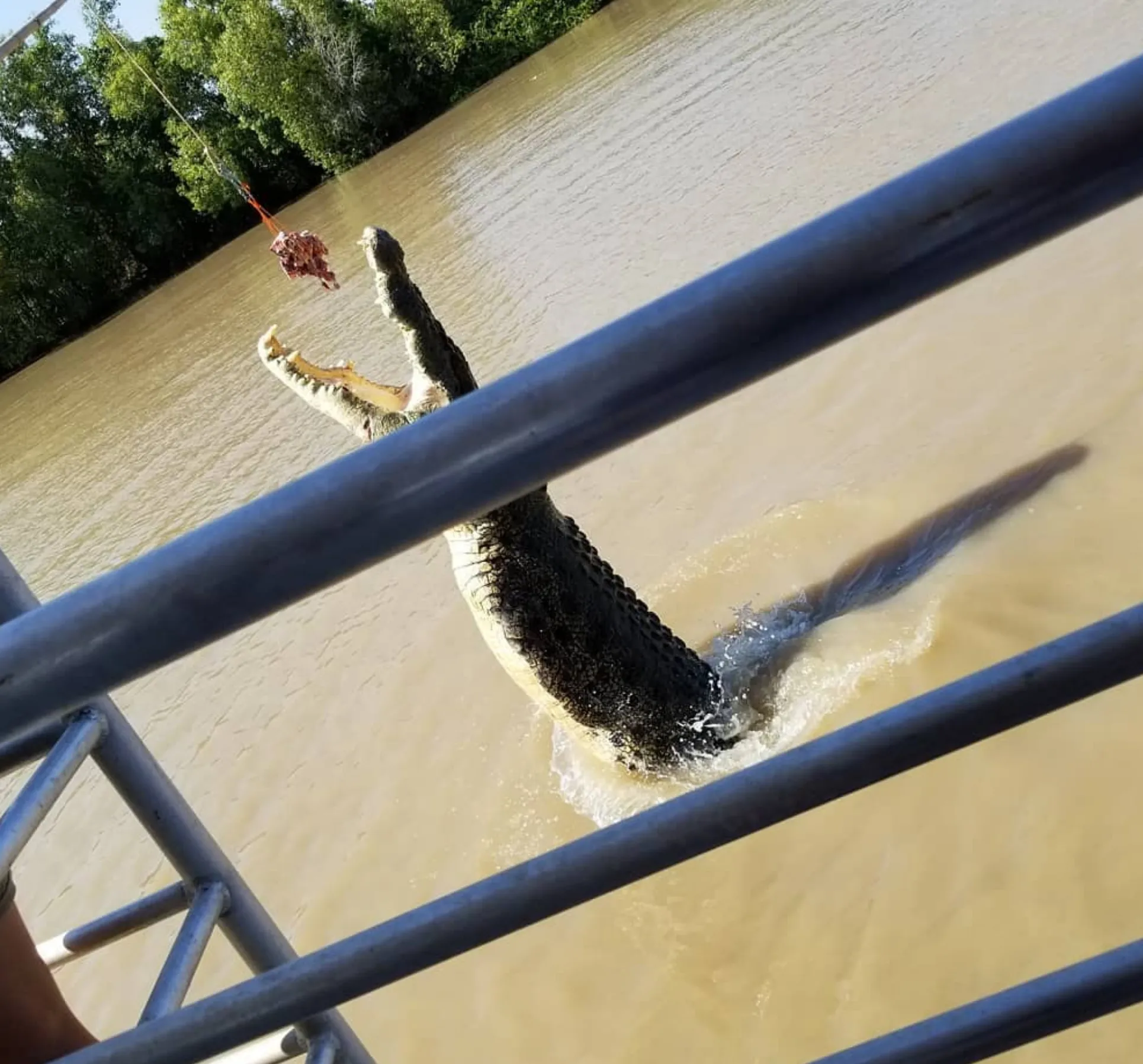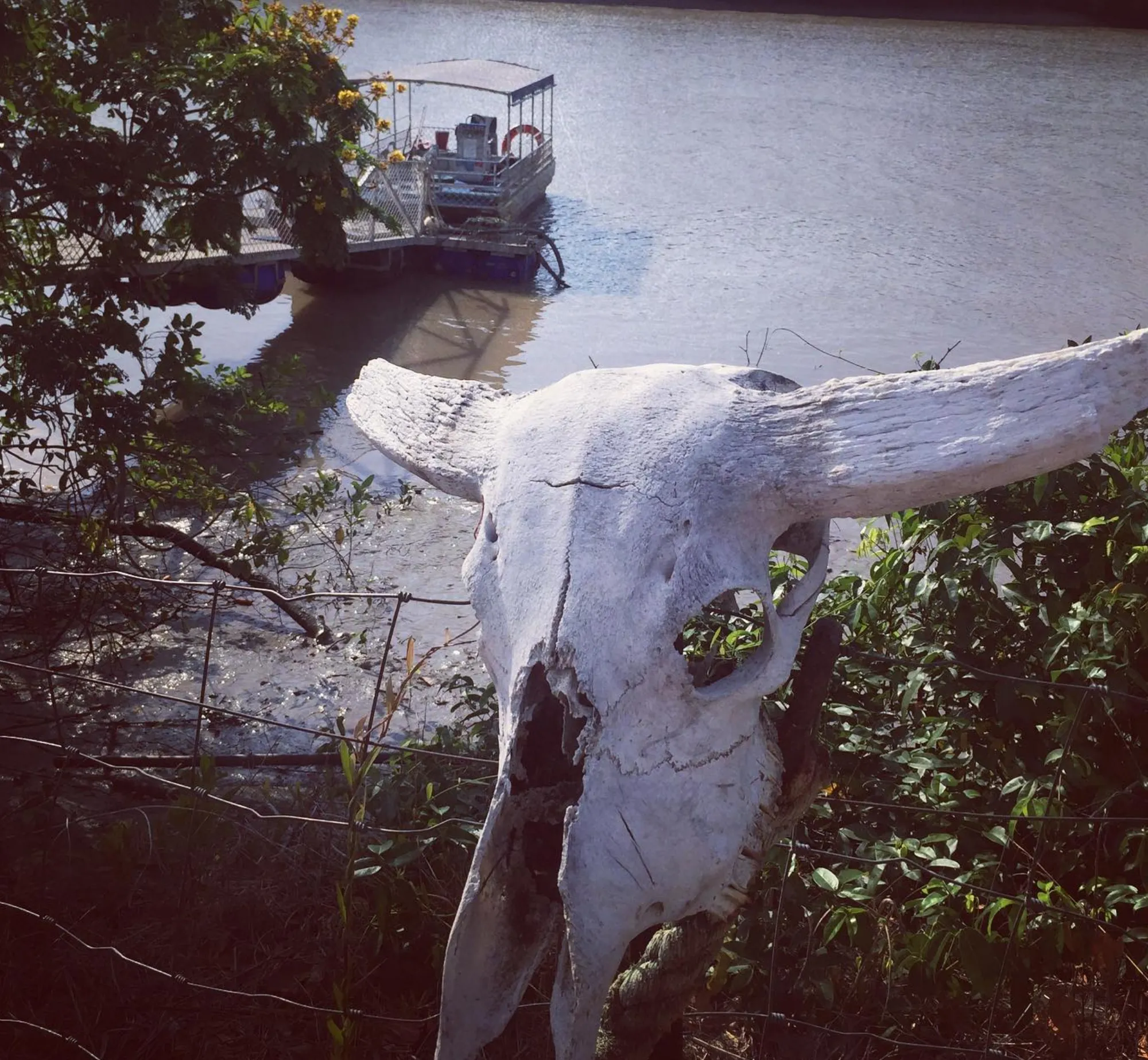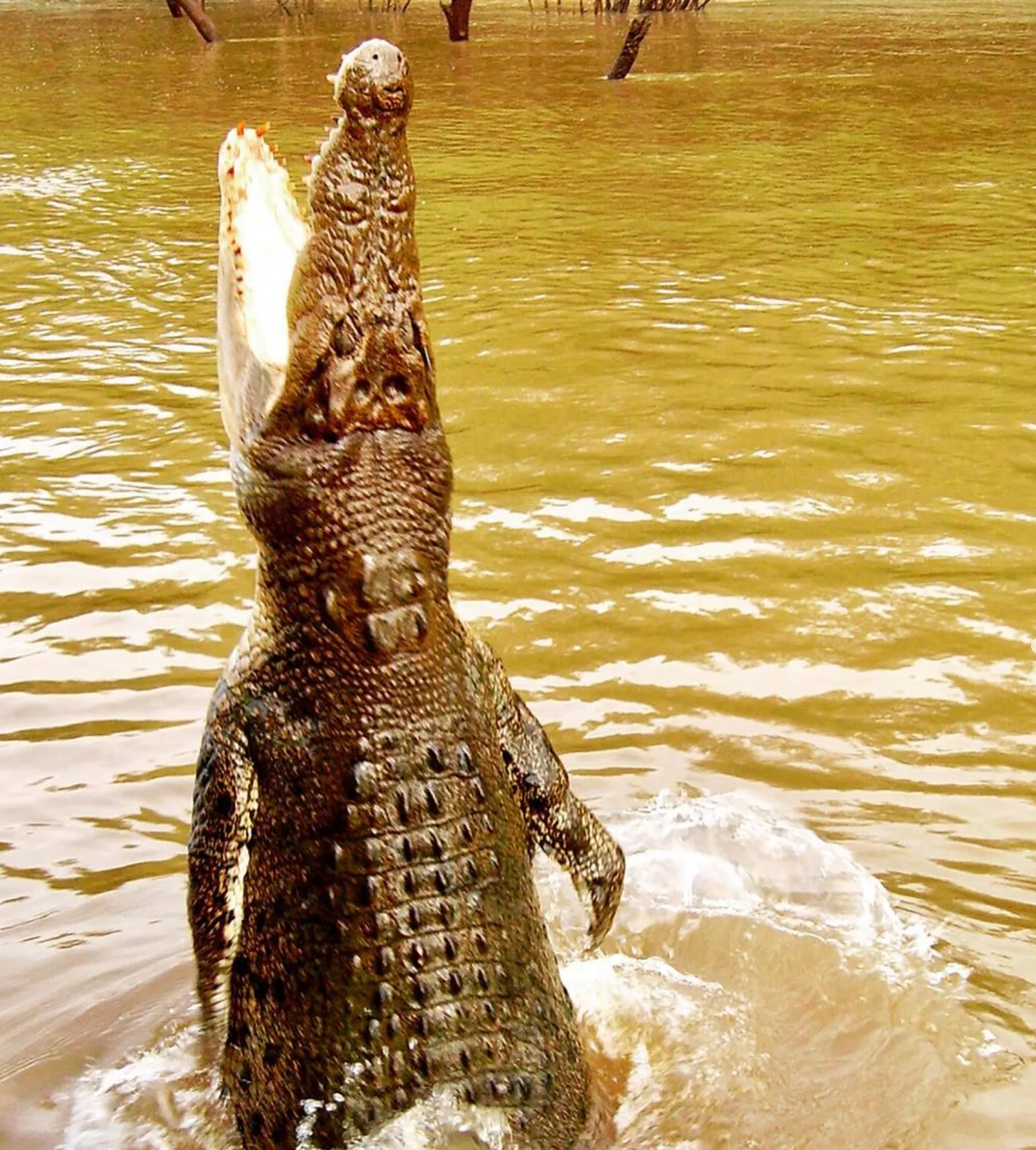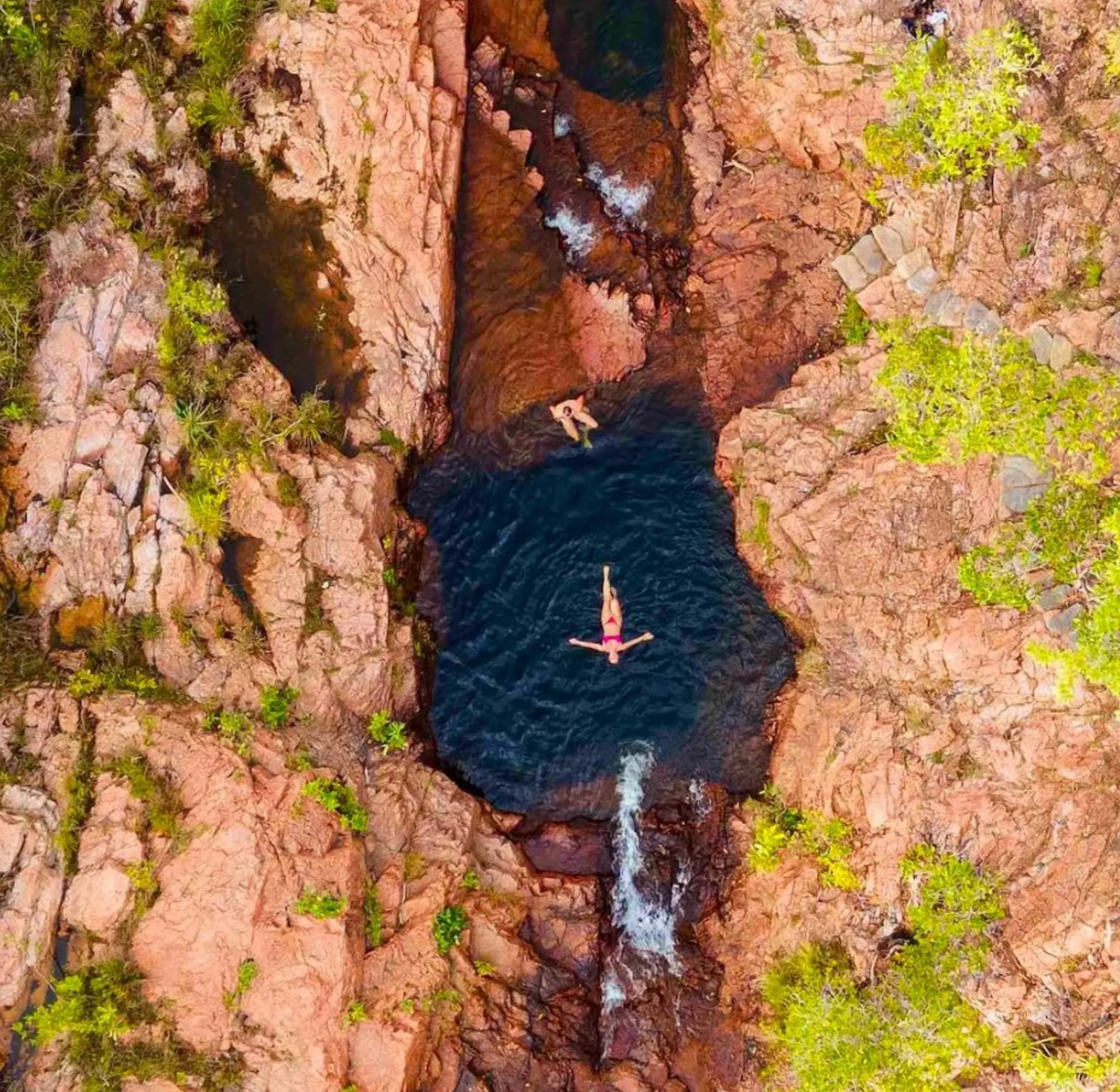Crocodilians, including their modern representatives like the American alligator (Alligator mississippiensis), are remarkable for their antiquity. Even though these animals are mostly regarded as water dwellers and cloaked assassins, the adaptation to such a behavior as leaping out of water has attracted scientific attention as well. In this piece of writing, I aim to identify the phylogenetic modification of the jumping behavior in different species of crocodiles such as the Crocodylus porosus and its contribution to survival and hunting.
Early Evolution of Crocodilian Jumping Behavior
The evolution of crocodiles including the Nile crocodile (Crocodylus niloticus) and the American crocodile (Crocodylus acutus) has taken several millennia. The evolution of the group of crocodilian families was due to changes in the environment in which they lived, so, they developed both water and land living species. The llanos of Venezuela along with the mangrove swamps are other habitats that has molded the crocodiles and their kinment and some of their unique coming out of water with great leaps actions. As observed in C. porosus, the jumping behavior is likely to be a remnant of its ancestral form of hunting that is designed to acclimatize the fast moving prey.

Modern Crocodiles: Anatomy and Jumping Behavior
Most of the modern crocodile species such as the spectacled caiman (Caiman crocodilus) harness a substantial portion of their jump on the hinge that is caused by their strong muscles. The component of locomotion in crocodilians, and more specifically the strong tail and limbs, is of great importance in overcoming the surface of the water. This crocodylus porosus is swift in that it hurl itself to the target in leaps using the concepts of head turning and tail snap. These behaviours have been noted both in nature and in captivity whereby crocodiles jump in the eating process to get the food and also the dominant animal has been playing with the social animals.
Reasons Behind Crocodile Jumping
Jumping serves multiple purposes for the crocodiles and their relatives. Within the various saltwater crocodile jumping behavior has been primarily seen among the species, such as Crocodylus porosus and the American alligator, when hunting, whereby, a crocodile’s leap is out of water snatching a prey resting atop tree limbs or riverbanks. Moreover, aggressive and non-aggressive contact interactions between dominant and subordinate animals also cause jumping behavior. These movements are common especially in social settings when the behavior will be used to show dominance over other individuals.

Crocodiles and Their Environment: Adapting to Diverse Habitats
Crocodiles have competing ecological niches as they have inhabited overwhelming variety of areas ranging from mangrove swamps to freshwater rivers which all affect their jumping tendencies. In cold water environments such as those occupied by alligator hatchlings, water kinetics and metabolic rates of the crocodilians, generally limit the capacity for movement, jumping included. Crocodilians habitating warmer regions like in Venezuelan llanos placesa Caiman crocodilus would have high energy levels and display rather hyperactive behaviors through jumping. This ability is important for foraging in places where some food sources are above the water and conjoining walls.
Hunting Techniques: Incorporating Jumping into Predator Strategy
It’s a matter of lurking and ambushing when it comes to hunting in crocodilians. In the case of mobile prey items located on branches or ledges such as those of the Nile crocodile, foods are secured through jumping. This tactic appears to be somewhat different based on individual crocodiles, some of which jump more often while hunting than others. This activity is common among most crocodiles that occupy less hospitable surroundings where food is not plentiful and hunting them takes more time and focus.
Evolutionary Adaptations: Tail and Limb Power
A crocodile’s powerful tail is a critical tool that enables the crocodile to jump. This has happened over long evolutionary time frames where some crocs including Crocodylus porosus and Crocodylus niloticus has had progressively stronger tails that allow them to jump out of the water. On swim behavioral observations of these crocodiles in both closed and open systems, it was observed that those exposed to a relatively large space of water would tend to jump more often indicating that the behavior is highly influenced by the habitat of the animals.
Comparisons with Other Reptiles: How Unique is Crocodile Jumping?
Nevertheless, jumping is a common behavior among many reptiles including some lizards and ways of jumping out of water like crocodiles have not been observed in other reptiles. The leaping behavior of species of crocodilians such as American alligators and saltwater crocodiles is way too exceptional than that of other reptiles providing an upper hand in hunting. Furthermore, anecdotal accounts from behavioral tests on the crocodiles indicate that this trait is more useful in habitats with scarce food resources, an advantageous characteristic from an evolutionary standpoint.
Case Studies: Notable Examples of Crocodile Jumping
Particularly, in Northern Territory Australia, crocodiles especially Crocodylus porosus type are known for their ability to jump out of water bodies in search of predators. In the water, these crocodiles often jump several feet towards the surface to seize either birds or small animals. Scan sampling was employed in these areas in order to obtain data concerning the specific movement component of the subdominant jaw and head that uses a range of motion, including launching the body into a jump. Indeed there are other cases including those in the Venezuelan llanos, during the dry season Caiman crocodilus behaved in a similar manner and so did the crocodiles.
Conservation Efforts and Crocodile Behavior Studies
Jumping behavior studies form a major part of crocodile behavior studies because crocodiles jumping is an important part of their ecology and also helps people to preserve these reptiles. For example, in urban areas or climate change areas, the welfare of the crocodile is often impacted by habitat destruction. The management of crocodiles for animal usage in the research including studies like the jumping one, is governed by the Animal Ethics Committee to ensure all research work is conducted humanely. Subsequent studies will most probably look at how alternative environments and water temperatures affect the active and passive behaviors of crocodiles and how water temperatures affect jumping.
The Future of Crocodile Behavior Research
Sufficient scope remains for future investigations on crocodile jumping behavior to be carried out. Active conflicts between crocodiles, when examined in relation to hunger cycles, help resolve the role of jumping and its importance for survival. Furthermore, factors such as incubation temperature and length of incubation will also assume significance in the understanding if and how the external environment at this early stage will have implications on the behavior of jumping later in life. It will still be pertinent to carry out objective studies on crocodilian species and their ecological adaptability, for instance, the American alligator and spectacled caiman will remain the subject of such studies.

Conclusion
Jumping behavior is of paramount importance in the life history of crocodilians because it offers an effective method of prey capture and protection. Evolution has provided these mass killers with tails and limbs that help them to leap out of water with ease. They afforded their studies and therefore their jumping activity should definitely continue and it will provide knowledge of the ecology and biology of these wonderful species. If you want to see them closer and feed these river monsters, we recommend our Darwin Crocodile Tours, where experienced guides will conduct this adventure without risk for you.
FAQs
Why do crocodiles jump out of the water?
The main reason which is commonly given is to intercept items that are out of reach and out of water such as small birds or other mammals. It is also used for social display behavior and head dragging.
Which species of the crocodiles are known to jump?
Crocodilians like Crocodylus porosus, Caiman crocodilus and Crocodylus niloticus are among the most notable for those species of crocodilians that can easily jump.
How does water temperature impact crocodile jumping?
Temperature of water may affect activity level and performance of crocodiles during jumps since colder temperature may lower water activity, and consequently jumping abilities. Warmer regions like the swamp also allows for various climatic regions with warmer bodies of water enabling more jumping.
Can young crocodiles and alligators leap?
Adult crocodiles are the most commonly seen jumping, but even juvenile crocodiles and baby alligators jump from time to time generally usually when food is involved or when engaged socially.
How did the jumping behavior of crocodiles evolve over time?
The crocodile jumping which is now observed in modern surroundings has taken many years from the time it was first made to improve hunting and social relationships. As the environment and their living conditions developed this special way of hunting had also emerged.



